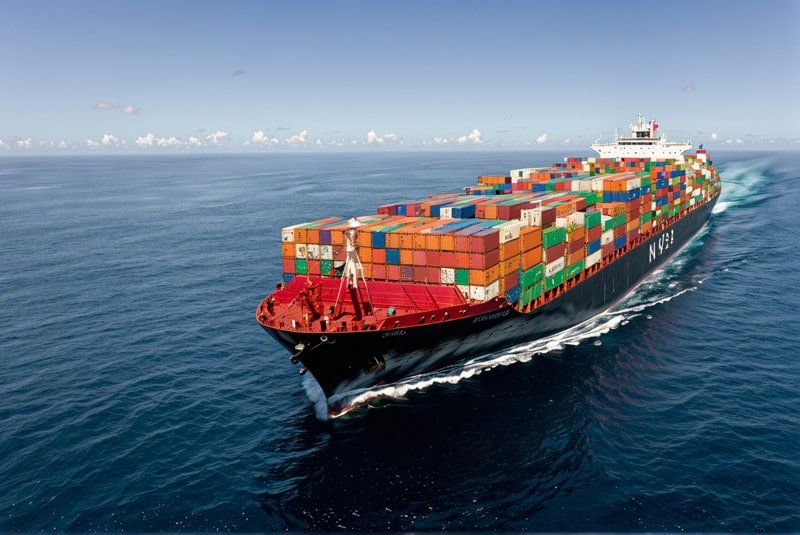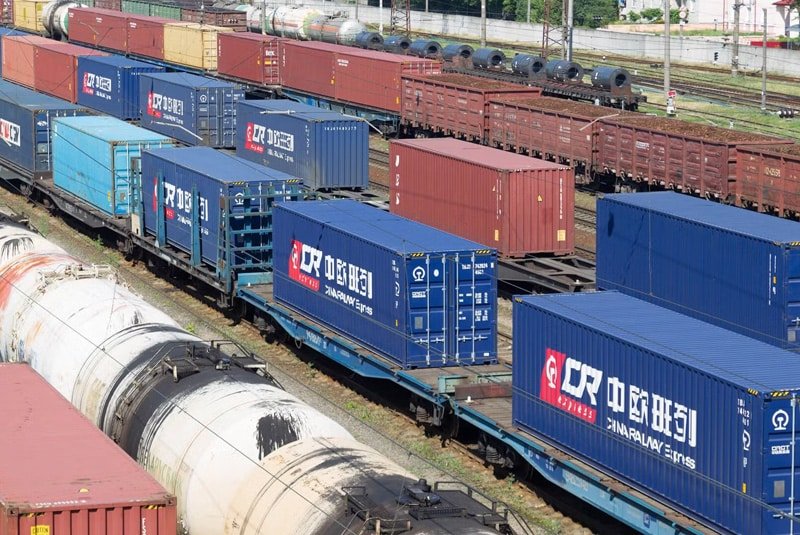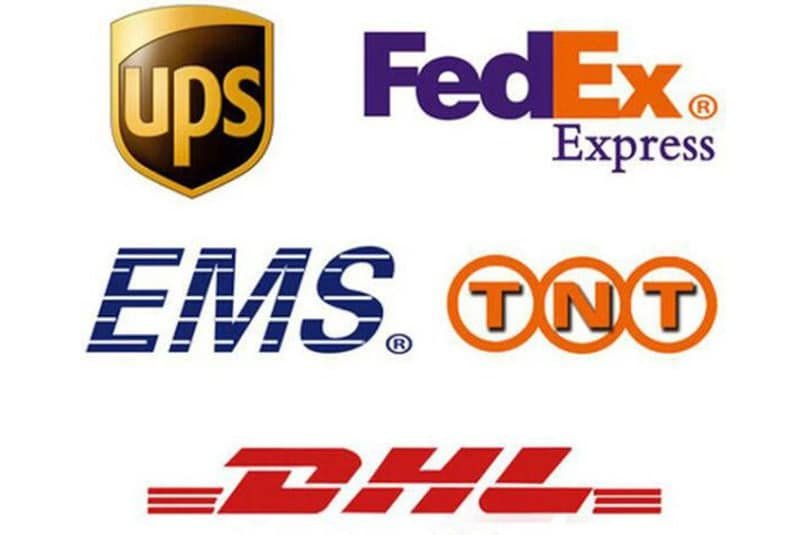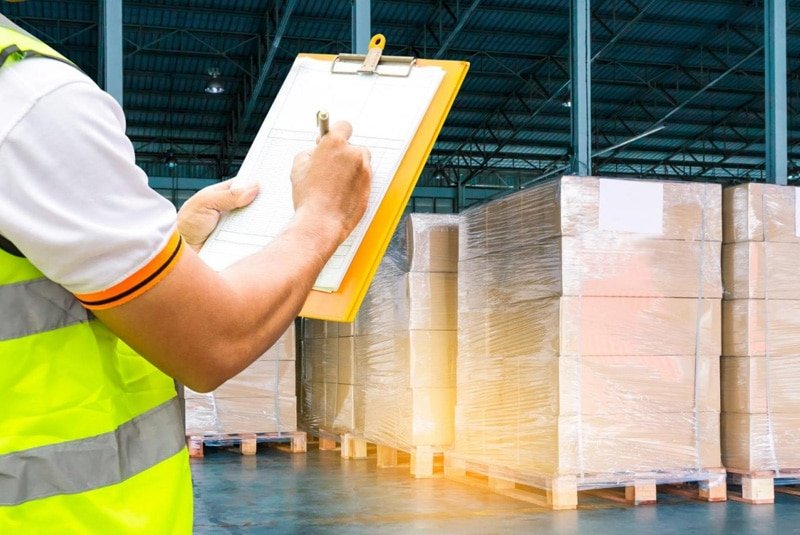Searching for the best China air cargo shipping? Get current air cargo shipping costs here, affordable shipping options, and professional analysis of transit times, customs clearance, and international logistics. To simplify your supply chain, use the most dependable and reasonably priced air freight providers whether your shipment is huge or little.
Air Freight from China
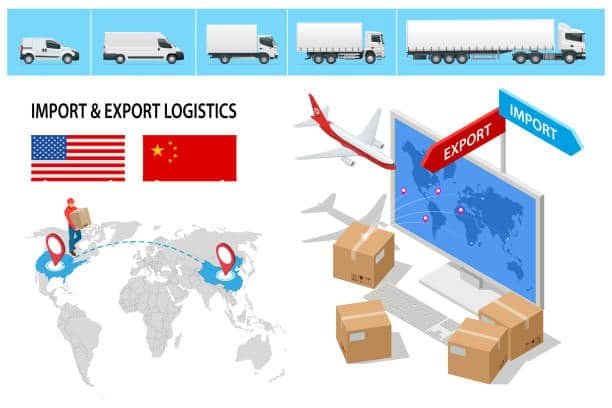
Guanwutong offers goods arriving into China from other countries as well as thorough air cargo services from China to locations all around. For instance, air freights usually takes up to seven days when shipping products to Europe, far faster than sea freights’ 35 to 40 days while a shipping to Brazil has a long-haul destination. We offer reliable air freight from China to Argentina for both standard and expedited shipments. For companies trying to rapidly and effectively move their goods, air transportation is therefore the best option.
Guanwutong guarantees that every cargo is meticulously managed, fulfilling tight deadlines and handling criteria to assure seamless delivery by means of a large worldwide network of skilled and very dependable logistics partners. From managing fragile, delicate, and high-value items to shipping large or heavy commodities, air shipments provide a practical answer for a broad spectrum of products.
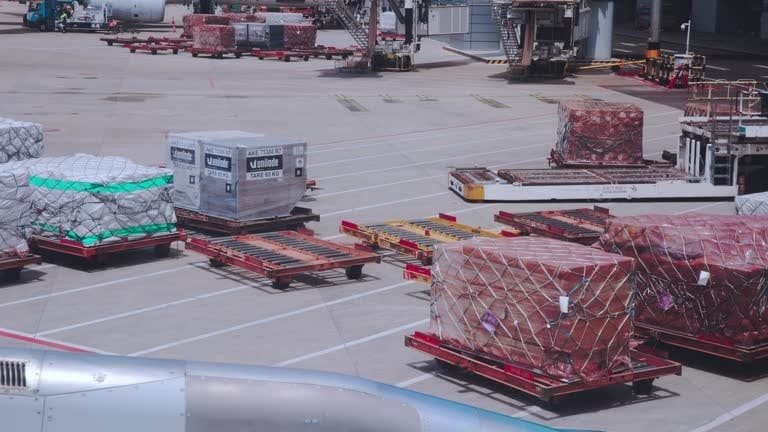
Our staff carefully examines every cargo request and analyzes the specifics to guarantee compliance with all criteria given the strict worldwide rules controlling air transportation. Following a thorough analysis of your shipping requirements, we customize our services to fit your particular expectations, so guaranteeing a flawless and quick freight experience fit for the type of your goods and logistical requirements.
How to Understand a Quotation and Calculate the Price?
Two main approaches allow one to ascertain the cost of air freight. First and most simply, multiply the cost per kilogram by the shipment’s overall weight. Based just on weight, this approach offers a rudimentary approximation of the delivery cost.
But since airplanes like Airbus and Boeing have limited cargo capacity, weight is not the sole consideration used in cost analysis. Pricing for shipments with low density—that is, those with a rather little weight but a comparatively large volume—is based more on volume than actual weight.
Known as “volumetric weight,” this computation helps airlines to consider the space a cargo holds consumes. Volumetric weight is computed using the formula:
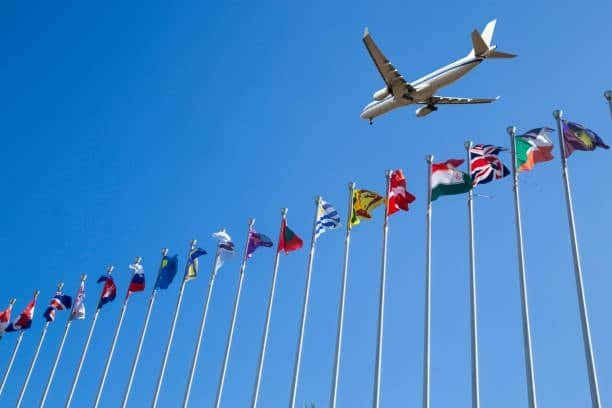
Guanwutong Remark: Volume (CBM) × 167 equals volumetric weight—average goods.
Using the dimensions of your shipment will help you to quickly determine the volumetric weight on your own, therefore guiding your understanding of shipping charge.
How to Calculate Chargeable Weight for Air Freight Shipments?
The chargeable weight of an air goods shipment is found by utilizing the higher value between the actual weight (recorded on a standard weighing scale) and the volumetric weight ( computed depending on dimensions). This guarantees pretty accurate accounting of weight and space in the pricing.
Air Cargo in China – The Complete Guide

Still the fastest and most effective way to move products all around the world is air cargo. Not all kinds of cargo, nevertheless, are best fit for this kind of transportation.
Guanwutong Info: Here you will learn about several facets of air freight, including pricing breakdowns, customs clearance policies, shipment constraints, and insurance choices for importing goods from China.
The Express Solution
The most time-efficient kind of travel now accessible is air freight. Unquestionably, over long distances, it is the fastest choice available among other logistical solutions. For the physical distance between China and the United Kingdom, for example, flying goods travel just a few hours.
Still, it’s important to appreciate the difficulty of international shipping routes. The whole procedure consists in more than simply the actual goods travel time. The whole shipping period is influenced by several other required actions including documentation, customs clearance, export/import fees, cargo pickup, handling, and ultimate delivery. These procedures cannot be avoided and sometimes take more time than the goods travel themselves.
Guanwutong Remark: Express Freight’s volumetric weight, or volume (CBM) times 200
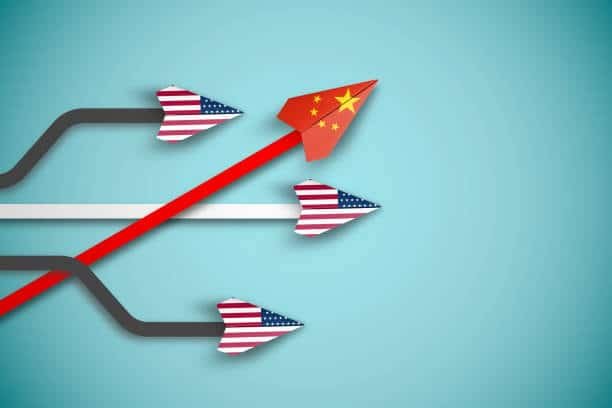
Guanwutong guarantees a flawless door-to-door air goods delivery system by means of our committed logistics solutions, therefore completing shipments for most locations worldwide within 3 to 6 days.
Please contact our Guanwutong experts for further specific information on air freight costs or to get a tailored express shipping amount quote between China and your intended nation. Our staff is dedicated to react quickly and effectively to satisfy your shipping requirements.
An Important Cost
Generally speaking, especially for shipments beyond 1.5 CBM in volume or 167 lb in weight—or 200 kg for express shipments—air freight usually costs more than sea freight. For companies and people that give quick delivery times top priority over cost savings, air freight is still the better option than sea shipping despite its higher price.
Choosing air travel lets you strategically maximize expenses by greatly lowering travel times. Your goods will be delivered within days instead of waiting more than a month for marine shipments.
The improved security and dependability of air goods are still another main benefits. Among the safest forms of transportation, air cargo drastically reduces the possibility of possible problems including damage, break-through, or theft during transit. Knowing that your goods are being handled by a quick, reliable, safe logistics system gives you piece of mind and guarantees that your shipments get at their intended destination without incident.
For a door-to—door cargo between China and the UK, for example, would take:
- 3 to 6 days via Air Freight
- 35 to 40 days via Sea Freight
A Permanent Tracking System
One of the most cost effective logistics solutions accessible since air shipments follow rigorous and well-organized processes. By streamlining the tracking process, the uniform character of air cargo operations lets consumers keep real-time view of their products.
Advanced live tracking systems will provide you regular information on the state of your shipment, so providing total view all through the shipping process.”Classic” air freight: Shipment status can be tracked with the assistance of your Guanwutong expert.
- “Classic” air freight: Your Guanwutong specialist can help you monitor shipment status.
- “Express” air shipments: You can get updates from your Guanwutong specialist or a tracking code is given for real-time monitoring.
Should I Use Air Freight?

As was already said, for shipments involving high-value goods, high-density items, or small cargo air goods are a quite helpful choice. Air transportation provides the highest security measures to reduce hazards of theft or damage should your shipment include delicate, valuable, or readily damaged goods.
For items with strict deadlines and that must be delivered as fast as feasible, air freight is also the ideal option. Should time be a major determinant of your company’s operations or supply chain, air cargo is the most dependable solution to satisfy your immediate delivery needs.
Process
Air freight’ shipping method is rather simple and consists of a disciplined set of actions to guarantee effective and seamless transportation:
- Your shipment is picked from the site of a supplier and driven by truck.
- If required, appropriate packing is done prior to the consignment arriving to the closest international airport.
- Processed to guarantee legal compliance before export is a customs declaration.
- Your goods arrive in the assigned nation by air freight.
- Arriving customs clear VAT and any relevant charges before releasing the goods.
- Your items arrive straight at their intended final location.
Contact Guanwutong now to get a customized air freight quote or for further information and let our logistics professionals help you with all your shipping requirements!
Recurrent Questions – Air Freight from/to China
Should I Book the Delivery Myself, or Will My Supplier Handle It?
We highly advise you to manage the air goods booking yourself even though your supplier has the choice to organize the delivery of your products through their own freight forwarder. This will probably result in noticeably better prices than what your provider could charge. Usually, providers include logistics as part of their service and add significant mark-ups, which makes the cost much greater than if you schedule the shipment on your own.
Don’t hesitate to get in touch Guanwutong if you like to acquire the most cheap rates without sacrificing service quality! Our committed group will make sure you pay the greatest price for premium air freight services.
Can I Obtain Insurance for My Air Freight Shipment?
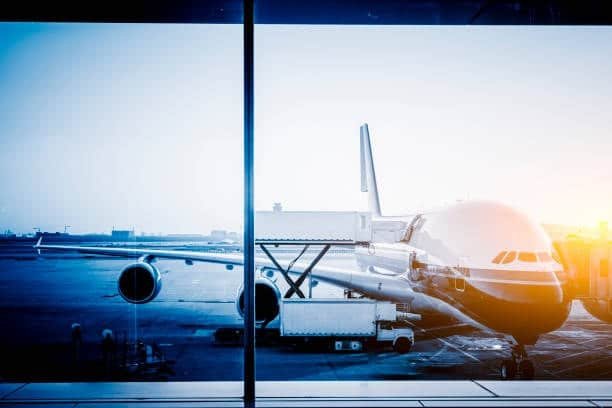
Indeed, it is quite advised to have insurance for air shipments. Having cargo insurance also offers an extra degree of security in case of unanticipated events including loss, damage, or delays since air shipments can include valuable or time-sensitive commodities.
The fee of our insurance service is 2.85% of your products’ reported value.
Are There Any Specific Restrictions I Should Be Aware Of?
Indeed, several rules and limits apply to air goods exports, especially with relation to the shipping of lithium batteries, which are widely used in electronic equipment.
To control shipments including lithium batteries, the International Air Transport Association (IATA) has set tight policies. In order to follow these rules, the consignor—shipper—must:
- Pack the items correctly following IATA guidelines.
- Guarantee proper shipment marking and labeling.
- Send the required paperwork proving compliance.
Ignoring these rules could cause delays, rejections, or maybe shipment seizure at customs.
How Is the Chinese Air Freight Market Evolving?

An Exclusive Perspective from Our CEO
The aviation goods sector had a record-breaking year in 2017 given the rising demand and constrained cargo capacity. Unprecedented levels of market rates and profit margins begged many significant issues regarding future tendencies. Here is a detailed analysis by our CEO below.
Why Does the Shortage of Cargo Space Continue?
*”Reduced cargo capacity investments and soaring goods demand are the main causes of the continuous shortage of cargo space; many airlines have reorganised their flight operations in response to financial difficulties, usually moving from combined passenger + cargo flights to passenger-only (PAX) flights. This change greatly affected available cargo space, particularly for major departure points like Hong Kong, Shanghai, and Beijing.”
Previously struggling financially, cargo planes are now in great demand and all of their available capacity is completely booked—particularly for the North American market, where costs have skyrocketed to $5–6 per kg.
Charter flights have been added to offset the supply-demand mismatch and cover the lack of available space; nevertheless, seasonal variations aggravate the peak season and lower the cargo capacity that is typically assigned on these flights during winter.
Another important determinant of demand is the changing priorities of multinational corporations. Historically, companies concentrated on lowering costs; now, delivery speed is the main issue. Industries like high-tech electronics need quick large-scale distribution, which drives air goods demand even more.
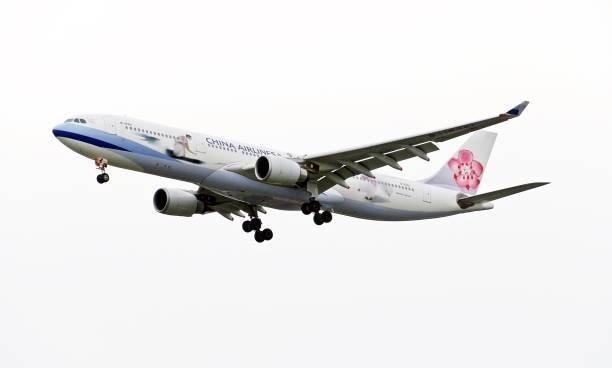
Tech behemoths like Samsung, Apple, and Huawei effectively monopolize available cargo space by securing whole charter planes during peak seasons. Furthermore, new product introductions—especially in the electronics industry—cause immediate shipping needs that increase goods costs even more.
Consider an iPhone shipment, for example; each device retails for more than $1,000 and weights about 400g per unit. With an air freight cost of $6 per kg, the effect on the final retail price is negligible. Nevertheless, these shipments must reach retail stores before Christmas, so highlighting the need of quick and dependable transportation options.
Last but not least, the rise of cross-border e-commerce—many goods are now produced, packed, and shipped straight from China, with orders fulfilled via sites like Amazon and other online markets—has resulted in hitherto unheard-of increase in small-parcel shipments, so increasing demand for air freight services.
How Amazon Influenced the Market

Amazon has totally changed the worldwide e-commerce scene and brought a paradigm change in the delivery and distribution of goods. Before being delivered to e-commerce platforms or straight to consumers, bulk shipments were historically carried in containers to different parts of the world including Europe and the United States. But the whole supply chain paradigm has changed significantly since order preparation now occurs right in China. Small items are shipped straight to locations all throughout Europe and the United States, not depending on big pooled shipments. Customs rules and trade restrictions have been reduced in response to this changing logistics model, therefore removing the need of having a physical corporate presence in these areas to manage imports and deliveries.
This change has spawned the entirely new market segment known as the tiny parcel sector. These smaller shipments now immediately go to Amazon fulfillment facilities or other main European and American e-commerce platforms. Chinese producers and suppliers have totally embraced this approach, now presenting their goods with freight expenses already included into the pricing plan. Consequently, a new direct-to–consumer industry has developed whereby Asian manufacturers are selling their goods straight to end consumers using online channels, so avoiding middlemen.
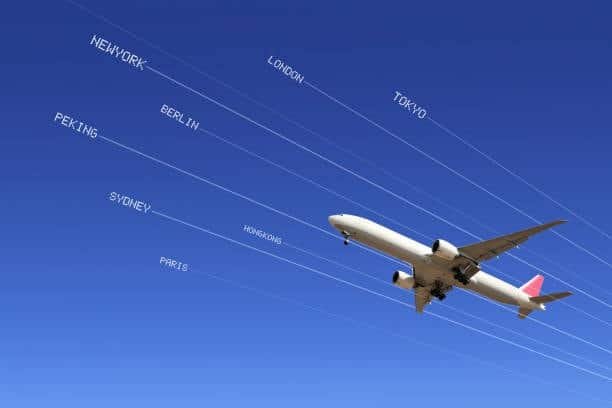
The growing expenses of air transportation have not seriously hampered e-commerce companies that give quick delivery first priority. Suppliers are evaluated on several e-commerce sites not only on dependability but also on their capacity to satisfy high delivery requirements. These sites set strict performance criteria, which forces online vendors to always raise their courier service quality as their exposure and ranking depend directly on their capacity to provide effectively. As a result, a lot of e-commerce vendors are ready to spend in improved logistics solutions to increase their competitiveness.
E-commerce shipments filled around 20% to 25% of the available airline cargo capacity during 2017’s peak seasons. This percentage was predicted to rise faster than 30% by 2018, especially for shipments coming from Asia and headed for Europe or the United States, therefore highlighting the fast expansion of this trend. Particularly the United States gains from a well-run customs system that lets every family daily duty-free importation quota without involving intricate tax and customs clearance policies. Small parcel imports from China have been much easier by this legal structure, therefore hastening globalization and allowing Chinese providers to sell straight to consumers in Western markets. Similar products’ availability and quick air freight’ efficiency have increased cross-border e-commerce’s reach, so supporting Amazon’s supremacy in the worldwide trade system.
What Are the Alternatives to Air Freight?
With each shipping mode providing unique benefits depending on cost, speed, and volume factors, sea goods and air goods remain the most often used transportation options for international exports. While marine goods to Europe typically take an average transportation time of about 30 days, a shipping container from China to San Francisco can get to its destination in less than 15 days. Rail cargo has become an excellent choice for people looking for a quicker substitute for shipping products between China and Europe, finishing the travel in about 15 days. Ocean freight from China to Bangladesh is the most economical solution for bulk shipments, with standard transit times between 15–25 days. Rail travel has more expenses even if it moves faster than conventional marine goods.
The Sea-Air approach, which deliberately blends the speed of air travel with the cost economy of sea freight, is another creative logistical option becoming popular in the e-commerce cross-border industry. Key transit hubs such South Korea, Singapore, and Dubai often use this hybrid approach to let items be transported affordably while keeping competitive delivery times. Adoption of the Sea-Air model has doubled yearly as the need for quick and affordable logistics solutions keeps growing, therefore setting it as a main development focus for 2018-2019 and beyond.
Temporary Importations and ATA Carnet: Yes, We Can!
Officially accepted in over 60 countries globally, the ATA Carnet is a necessary paperwork for temporary imports. Participating in international shows calls for both a valid ATA Carnet and an official import declaration for China. Customers are advised to send scanned copies of their ATA Carnet ahead of time for validation so as to guarantee a flawless customs clearance process. Furthermore, it is imperative to provide thorough consignee information so Guanwutong may verify whether the customs clearance process may be finished without delays.
Chinese customs rules state that all temporarily imported items have to be either exported to another location within six months of their first arrival into China or returned to their country of origin. Apart from the ATA Carnet, importers have to send these records:
- a formal invitation letter
- an official letter of customs clearance permission
- Together with event information like dates and the exhibition’s name, the exhibition venue’s whole address is shown.
- a letter confirming the stand booking
- Letters of approval from the Chinese government and customs administrations
Customers who are looking for other temporary import options without an ATA Carnet should be advised that Chinese customs will go over a rigorous three to four week verification process. Goods might thus not be cleared quickly, sometimes resulting in major delays.
Guanwutong highly encourages all customers to get prior approval before exporting any items since China’s import rules are more complex than those of other nations. Ignoring this could result in unanticipated difficulties during the clearance procedure, thereby stressing the need of careful planning and following all legal criteria.
What Documents Are Required for Air Freight from China?
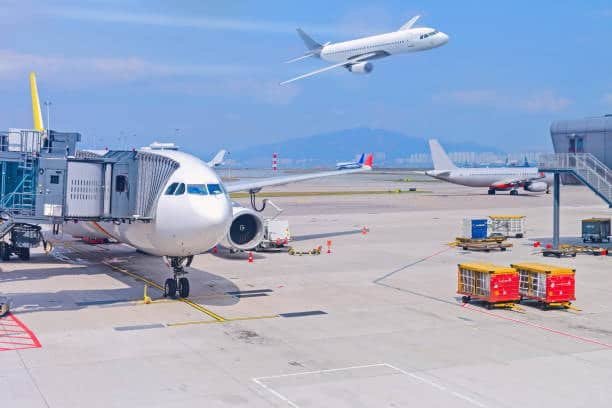
To enable seamless customs clearance and prevent possible delays when exporting goods by air from China to foreign locations, the required documents must be precisely planned and accurately filled. The following are the necessary paperwork needed for Chinese air goods shipments:
1. Airway Bill (AWB)
Whether the airline of choice is used for travel, an Airway Bill (AWB) is a required paperwork produced by the airline upon international goods shipment. Along with a thorough cargo breakdown, the AWB has extensive information on the shipment including complete sender and receiver details. Usually it comprises the quantity of products, cubic meter volume (CBM), gross weight, shipping date, projected time of departure (ETD), and other pertinent shipping information. Among the most important papers in air cargo, the AWB functions as both a receipt for the commodities moved and a contract of carriage.
2. Commercial Invoice
To evaluate imported products, customs officials must first review a basic document called a commercial invoice. It offers crucial information such the buyer’s and seller’s names, the transaction’s date and terms, the shipment’s weight or volume, and a whole description of the items. It also calls for the shipment’s total stated value and unit pricing. A well-written commercial invoice guarantees seamless customs clearance, which lets the authorities of the importing nation decide on relevant taxes and charges, therefore avoiding needless delays.
3. Packing List
Another crucial file that provides a comprehensive inventory of the cargo under shipment is the packing list. This paperwork should match the business invoice precisely since it offers an itemized list of the contents of the shipment. Usually it covers specifics such dimensions, weight, product descriptions, measurements, and packaging guidelines. For goods forwarders, customs officials, and warehouse workers seeking quick shipment contents verification, the packing list is especially helpful.
4. Certificate of Origin (C/O)
In international trade, a Certificate of Origin (C/O) is an essential paperwork used to verify the nation of manufacture for the goods. Many times, customs officials need this paperwork to decide whether the cargo fits for duty exemptions or preferential trade agreements. Often referred to as “Form A,” the C/O validates the location of manufacturing and can be required to comply with trade laws, tariff requirements, and import limitations of the destination country.
5. Insurance Certificate
One crucial document proving insurance coverage for the cargo throughout transportation is an insurance certificate. This certificate lists the policy number, the kind of insurance policy in use, its terms and conditions, It confirms that entire container of the goods is insured against any hazards including damage, loss, or theft during transportation. International shipping depends on an insurance certificate since it provides financial security and guarantees compensation in case unanticipated events compromise the products in route.
6. Delivery Order
Usually produced by the carrier or goods forwarder, a delivery order is a necessary paperwork for overseas shipping. Once at the destination airport, this allows the cargo release to the consignee or assigned agency. It lets the consignee take custody of the goods and serves as evidence the cargo arrived at its intended destination. A flawless and effective handover of goods upon arrival depends especially on the delivery order.
Exporters and importers can enable flawless international air goods shipments, reduce possible customs-related delays, and guarantee compliance with international trade rules by making sure all these paperwork are correctly produced and sent.
What Is the Shipping Time for Air Freight from China?
Calculating the air cargo shipment time from China requires considering many elements. There are several phases of transit overall:
- Pickup Time: The length of time needed to get the items from the Chinese export airport from the manufacturer air freight companies.
- The air freight time—that is, the time required for the cargo to be moved from China’s departure airport to the destination airport.
- Delivery Time: The time needed for ultimate delivery to the consignee’s site and customs clearance.
Depending on many logistical variables including distance, airport choice, and customs clearance, each of these phases adds to the container load overall shipment duration—which may run from 3 to 9 days. The approximate times for every stage are broken out in the table below:
Estimated Shipping Time for Air Freight from China
| Shipping Stage | Time Required | Details |
| Pickup Time | 1 – 3 days | The duration depends on the distance between the supplier’s factory and the selected airport in China. If the factory is located in the same city as the airport, pickup may take just a few hours. However, if the goods are transported from northern China to southern China for export (due to lower air freight rates in the south), it may take 2 to 3 days. |
| Air Freight Time (Airport to Airport) | 1 – 3 days | Direct flights take only a few hours. However, if the cargo requires transit through a middle airport before reaching the final destination, it may extend the shipping time to 1 – 3 days. |
| Delivery Time (Customs & Final Delivery) | 2 – 3 days | Before dispatch, customs clearance must be completed, which generally takes 1 to 2 days. Once cleared, the final delivery to the consignee’s location takes approximately 1 additional day. |
| Total Estimated Time | 3 – 9 days | The overall shipping time from the supplier’s factory in China to the recipient’s airport or doorstep ranges from a minimum of 3 days to a maximum of 9 days, depending on factors such as transit requirements and customs processing speed. |
Understanding these timesframes helps companies to better schedule their air goods shipments from China and maximize their supply chain to guarantee on-time delivery.
What Are the Shipping Rates for Air Freight from China?
When computing air freight from China to foreign locations, the overall cost usually consists of three primary elements:Pickup Cost in China Mainland
- China Mainland Pickup Costport)
- Airport to Airport’s Air Freight Cost
- Cost of Delivery: From Destination Airport to Your Doorstop
Every one of these expenses changes depending on several variables including trade terms (FOB or EXW), shipment weight, distance, and shipping seasons sea and air freight. These cost elements are broken out thoroughly below air shipping.
1. Pickup Cost in China Mainland
| Pickup Weight | Estimated Cost | Additional Information |
| Small Shipments | Free | If you choose a freight forwarder like ours, we offer free pickup services for small shipments from your supplier’s factory to the airport. |
| 500 KG Shipment | $50 – $80 | The exact pickup cost depends on the distance between your supplier’s factory and the selected airport. Since China is vast, pickup costs can vary significantly. |
Should your supplier be shipping goods under FOB (Free on Board) conditions, you are not liable for this charge. Delivering the products to the export airport in China falls to the provider.
2. Air Freight Cost (Airport to Airport)
Factors including fuel prices, airline capacity, and seasonal demand cause regular fluctuations in air freight charges—sometimes varying every half-month or even many times a week. Below are approximations depending on destination areas:
| Destination | Estimated Cost Per KG |
| United States | $5 – $9 per KG |
| Europe | $6 – $10 per KG |
| Australia | $6 – $10 per KG |
| Africa | $10 – $15 per KG |
Peak shipping seasons, like before Christmas or the Chinese New Year, cause air and ocean freight and costs to rise significantly from more demand.
3. Delivery Cost (From Airport to Your Doorstep)
| Shipment Size & Distance | Estimated Cost | Factors Affecting Cost |
| Standard Small Shipments | $50 – $500 per shipment | Final delivery cost depends on: |
| 1️⃣ Distance between the destination airport and your location | ||
| 2️⃣ Total chargeable weight of the shipment | ||
| 3️⃣ Seasonal price fluctuations |
Should your supplier ship under FOB conditions, you are not liable for this charge since the supplier is in charge of transporting the products to the departure airport in China air freight forwarder.
How to Get the Most Accurate Air Freight Rates?
This guarantees you the cheapest shipping at most current rates and helps you to save needless expenses resulting from obsolete pricing china to the usa.
Top 11 Export Airports in China
China boasts several foreign airports handling air goods shipments. Should your supply not be located in one of the main export hubs, a goods forwarder can set up consolidation and pickup from several locations. These are China’s top eleven export airports:
| Airport Name | Location | Additional Information |
| 1. Beijing Capital International Airport | Beijing | One of China’s busiest international airports, located in the capital city. |
| 2. Shanghai Pudong International Airport | Shanghai | A major cargo hub operated by Shanghai Airport Authority. |
| 3. Shenzhen Bao’an International Airport | Shenzhen | Located near Hong Kong, offering quick global connections. |
| 4. Guangzhou Baiyun International Airport | Guangzhou | Second busiest in China, with strong international air freight capabilities. |
| 5. Hangzhou Xiaoshan International Airport | Hangzhou | A rapidly growing hub serving Asia and Europe. |
| 6. Xiamen Gaoqi International Airport | Xiamen | Major hub for flights from China to global destinations. |
| 7. Fuzhou Changle International Airport | Fuzhou | Important for international trade and logistics. |
| 8. Xi’an Xianyang International Airport | Xi’an | A growing airport handling increasing export volume. |
| 9. Chengdu Shuangliu International Airport | Chengdu | Fourth busiest airport in China for international cargo. |
| 10. Kunming Changshui International Airport | Kunming | The largest airport in southwestern China. |
| 11. Qingdao Jiaodong International Airport | Qingdao | A major international shipping hub for Asia and Europe. |
Conclusion
Three key cost elements define air shipments from China: final delivery fees, airport-to-airport freight prices, and pickup fees. Shipping weight, distance, seasonal demand, trade terms (FOB or EXW) all affect these expenses. Generally speaking, pick-up costs are low—especially in cases involving a goods forwarder. Still, air rates change regularly and are influenced by world shipping conditions. The distance from the airport to your home and the overall shipment weight will determine the last delivery cost.
Working with a trustworthy freight forwarder, selecting the best departure airport, and obtaining an updated price before every cargo will help you to maximize shipping expenses.

